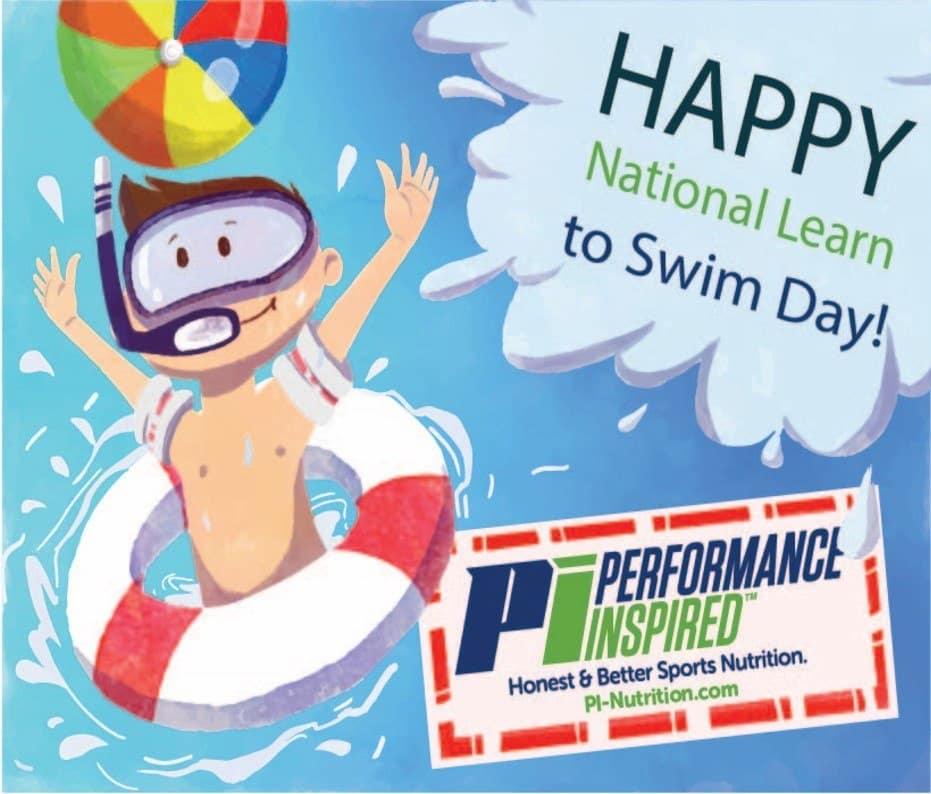Just Keep Swimming

National Learn to Swim Day is today and while many people take this opportunity to enroll their children in swimming classes at their community parks and recreation or gym pools, it is also a great time to remind people of all ages of the all the great benefits swimming has to offer for exercise, both cardio and strength. Swimming is safe for kids (they actually see it more as play than exercise), adults, seniors, pregnant women, and those with impact injuries. Before anyone can even get started though, it is important to emphasize the importance of making sure you are swimming in a safe environment. While swimming and water exercises can be done anywhere, you should be cautious of the risks in a particular area such as water deeper than your comfort level, undertow, riptides, or the quality of water you are swimming in. Once you have taken the proper safety precautions, you can get started.
Benefits of Swimming and Water Exercise
Before I go into different exercises that can be done in the water, let’s discuss all the benefits swimming, water aerobics and other water exercises has to offer. One of the most influential factors is the lack of impact swimming has on one’s bones and joints. Since water offers strong natural resistance to any movement, movements can be done without worrying about banging or jolting on joints. This is great for people recovering from an injury, as a therapy session, or for someone with arthritis.
While asthma is not usually mentioned when it comes to swimming, I’d like to take this opportunity to discuss the huge benefits swimming can offer for those with asthma. The humid environment that indoor pools offer is great for moisture replacement in the bronchial tract. Moisture from the water can replace the moisture expelled during vigorous breathing. It is also a great way to help expand lung capacity as well as gaining control over breathing. While the issue of chemicals such as chlorine can raise questions, swimming in salt water pools is best for individuals with asthma.
Speaking of salt water, I feel it’s also important to mention that swimming in salt water pools, which are becoming more and more popular, is good for your skin. It helps retain moisture, as well as detoxifying your skin to help promote new cell growth. When you exit the pool, make sure you rinse off and apply lotion. This will help lock in moisture. Another great habit to do regularly upon exiting the pool is tilting your head to each side towards the ground to help empty any excess water and drying ears thoroughly after swimming. This will help reduce the possibility of an outer ear infection, also commonly known as “Swimmer’s Ear”. Some protective equipment you can use to help minimize the risk of an outer ear infection are swimming caps and earplugs.
Swimming is great for physical health, but it is equally great for mental and emotional health. Since you’re active and your heart rate is up, endorphins are firing off. This release of endorphins helps with your mood and level of stress, while studies have also shown that regular aerobic exercise, this includes swimming, is great for improving your quality of sleep. Engaging in deep rhythmic breathing, listening to the sound of your breathing, and hearing and feeling the water rush by your body allows your mind to enter a calm and meditative state, focusing inward and drowning out distractions. If you feel like your drowning emotionally, jumping into a pool may be just what you need.
Having improved flexibility and posture are key to any workout and help reduce the risk of injury and swimming is a great way to progress in those areas. Because your core is engaged while swimming, your balance and posture improves and with all the different options pool workouts have to offer such as water aerobics and the various strokes you can use if you choose to swim laps, this does wonders for your flexibility. Just think about the reaching, stretching, pulling, and twisting your body does while swimming; however, because of all of this movement, make sure you stretch before hopping in.
Burn Calories and Build Muscle
Now let’s get to the good part: torching calories! On average, a 160 lb. person can burn around 423 calories per hour of swimming laps at a low or moderate pace. The same person doing a 3 mph walk burns about 315 calories or 365 on the elliptical. At a vigorous pace of swimming, a whopping 715 calories are burned. That’s about the equivalent to a standard fast food cheeseburger or large order of French fries. This intense calorie burning doesn’t happen by accident. It is a direct correlation to the level of intensity swimming provides your body. It is a full body workout that builds endurance and strengthens and tones muscles. Building muscle is the fastest way to burn calories and with all the muscles you use while swimming, it’s a win-win situation for weight loss and overall fitness.
Swimming really is a full body workout. Your entire body should be engaged if you’re using proper form and effort. These muscles include your glutes, hamstrings, quads, core, upper and lower back. It also helps target many of the underworked muscles, especially for women, such as your latissimus dorsi (lats), deltoids (shoulders), and trapezius (traps). And probably the most important muscle of them all, the heart! Swimming is great for cardiovascular fitness.
Swimming and Water Exercise Techniques
While in the pool, you can choose to do laps or standard aerobic and strength moves. If you choose to do laps, it doesn’t have to be boring. You can switch it up from time to time. Maybe some day you do 100 meter sprints and another day you do concentrate on distance, doing 500 meter long swims. You can also incorporate interval training in your swimming regimen. You can do this by alternating laps such as doing 2 fast laps followed by 3 easier laps. If aerobic movements are more your thing, it is best not go any deeper than waist high water. Some great movements to do are jogging in place with high knees, squat jumps, outer thigh lifts, and knees to elbow oblique twists. If you’re doing oblique twists, isolate one side at a time. This will intensify the effect of the movement. You can also do things while hanging on to the edge of the pool such as bicycles, flutter kicks, scissor kicks, leg lifts, and tricep dips.
In Conclusion
All in all, swimming is a great way to get active for those of all ages and ability levels. Don’t expect to jump right in and knock out a crazy number of laps. You’re going to exert a lot of energy so start off easy and take time to adjust. Start slow and slowly increase your strength and endurance because remember, no matter how slow you go, you’re still lapping everyone sitting on their couch!


